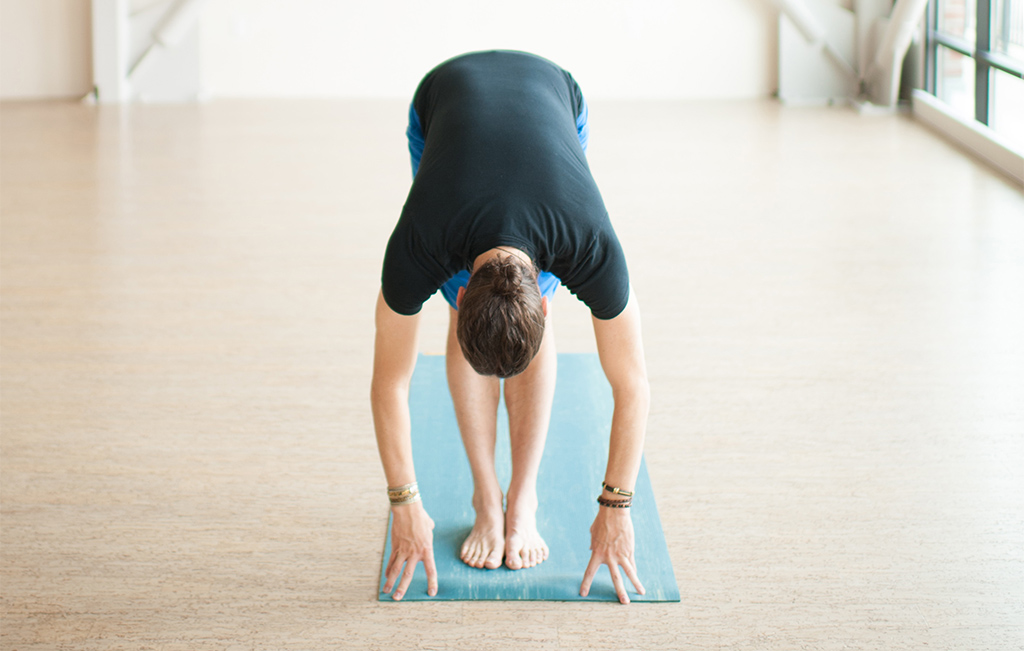
Whether yoga practice can actually “detox” our bodies is controversial. Hot Yoga systems claim that sweating is a powerful way to detox. Physiologists dispute this, saying that perspiration is meant to cool the body, not detoxify it. While trace amounts of heavy metals have been found in sweat, detoxing is not the primary purpose of perspiration. Other systems in our bodies, they argue, are more responsible for detoxification. These include the filtering action of the kidneys, the detox processes in the liver, the elimination processes in the intestines and every exhalation we take.
We practice yoga asanas (poses) to free the body so that it can more easily take in, let go, and absorb the energy of the breath. In Patanjali’s Eight Limbs of Yoga (second chapter of the Yoga Sutras), the practice of asana (the third limb) immediately precedes pranayama, expansion of the breath. Asana relaxes and mobilizes the body’s structures, allowing us to receive and expel the breath with greater ease. Asana also squeezes and stretches our core—the organs in our torsos—to make them work more efficiently.
Even though all asanas support respiration, some do this with more specificity. Quite often, we think of chest- and heart-opening poses as lung-supporting poses, and this is true. But you may be surprised to learn that forward bends actually create even more space for our lungs than backbends do. The back expansion inherent in any forward bending position supports the natural rotation of your lungs as you breathe.
Uttanasana (Standing Forward Bend) allows us to access the sensations of our lungs rotating as we breathe. In any forward bend, it’s important to make sure that your pelvis bends forward along with your spine. In Uttanasana, your pelvis should tip forward so that the upper body “pours” out of the pelvic bowl. When you bend forward from the waist instead of from the hips, the fronts of the intervertebral discs, particularly in the lumbar (low back), sustain unhealthy pressure.
If your pelvis does not easily tip forward in a forward bend, it is likely because your hamstrings and/or abductors are tight. However, most people can do this pose safely—even if these muscles are tight—by bending the knees enough to ensure that the pelvis tips forward. Remember that Uttanasana is primarily a forward fold. It is the forward movement of pelvis and spine and the rooting of your legs—not the degree of bend in the knees—that are most vital to the spirit of the pose.
If you have diagnosed disc disease or uncontrolled high blood pressure, Uttanasana may not be Yogaappropriate for you at this time. In the second and third trimesters of pregnancy, try widening your stance to accommodate your growing belly.
How to Practice Uttanasana
- Begin by standing on a nonskid yoga mat with your feet parallel and hips-width apart. As you stand, plant your feet into the floor. Imagine your feet growing roots.
- Place your hands on your waist and tip the top of your pelvis slightly forward, lifting your tailbone up behind you.
- On an exhalation bend your knees as you fold your pelvis and torso forward together toward the floor. When you reach the bottom of your forward bend, release your hands from your hips and place your hands on the floor or on yoga blocks.
- Relax your neck so that the back of it is long and the top of your head points toward the floor. You can relax into the pose with your knees bent as they are, or you can begin to straighten them gradually, only straightening so far as you can maintain your forward pelvic tilt.
- Breathe deeply into your back body. As you inhale, let your breath expand your entire back body. You may feel the torso lift up, away from the floor, as you inhale. Allow this movement. Relax your abdomen and imagine drawing your breath all the way down into your roots. As you exhale, feel your torso settling forward again, letting go of tension and effort.
- When we inhale, the lungs naturally expand outward, away from each other, and the outer sides of the lungs rotate forward into the sides of the ribcage. When we exhale, the lungs move back toward one another and settle into the back. Because of this, as you inhale you may feel your back body expand outward and your shoulders and arms round forward slightly on the inhalation. As you exhale, feel your shoulder blades roll back toward the center of your back.
- Allowing your body to oscillate—up and down, outward and inward—in response to the internal movement of your breath supports free respiration. Let your pose grow out of the breath, rather than making the breath conform to the pose.
- Take five to ten breaths. Then on an inhalation bend your knees to about 90 degrees, root your feet and lift your torso enough so that you are about halfway toward standing. Rest your elbows on your knees. Stay here for a few breaths before pressing down through your feet and lifting up to standing. Resting at the halfway point prevents the dizziness that some people feel when they return to an upright position after practicing Uttanasana.

Thanks! I hope it’s helpful to your readers.